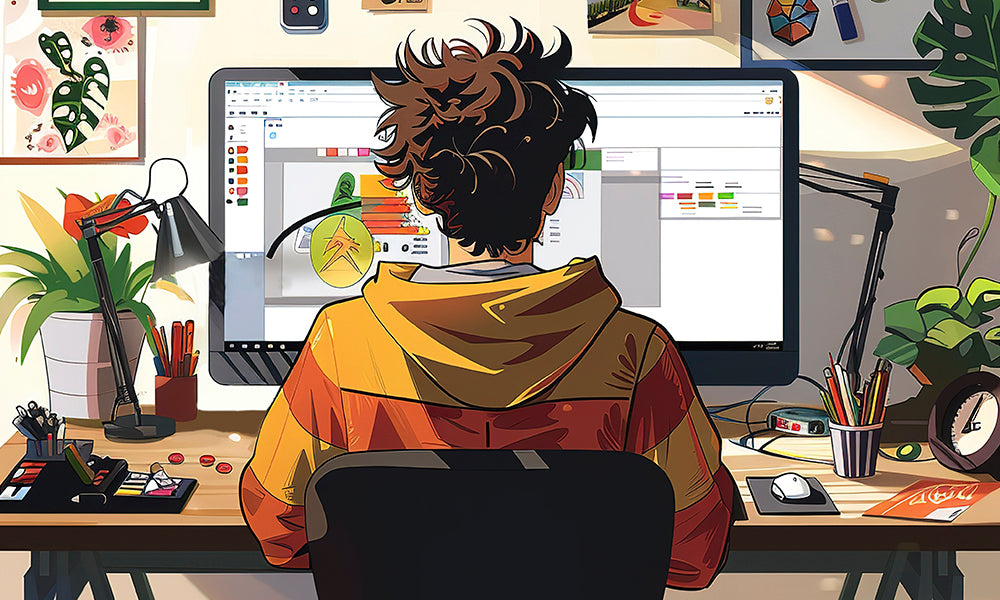Chasing Originality in a World Obsessed With Templates

In modern creative fields, where standard approaches often dominate, the push for originality brings both challenges and chances. From marketing to design, the widespread use of templates can drown out unique voices, leaving many trying to break free from predictable patterns. The desire for authenticity strongly resonates with people who want to stand out, adding new energy to different industries.
Creating something truly original isn’t always easy. Moving past familiar outlines can open the door to new ideas and methods. This shift toward individuality reflects an ongoing conversation about what creativity means today and how it can grow even when everything starts to look the same.
When Custom Work Becomes a Statement Not Just a Service
In busy urban areas, custom architecture stands out as a way to express identity. Originality stands out when clients work with an architect in Los Angeles or other urban areas. It gives clients the chance to shape spaces that reflect personal stories and emotions. Instead of following trends or Pinterest boards, this approach leans into one-of-a-kind expressions tied to their goals, dreams, and life experiences.
This interest in custom design shows a clear change in values. People are choosing craftsmanship and personal input over fast, one-size-fits-all solutions. They welcome collaboration and want to be involved in the process. Custom architecture doesn’t just express personality—it creates lasting impressions and encourages a deeper connection with surroundings.
Data Can’t Replace Imagination
Metrics can guide decisions, but when every move is based on split tests and trend reports, creativity gets boxed in. Teams chasing numbers often overlook the weird, risky ideas that make people pay attention. Original work doesn’t usually come from what’s been proven—it comes from what hasn’t been tried yet. Brands that cling to the safest path rarely stand out; they just get lost in the noise.
Finding the right balance between data and creativity is important for building a unique brand. When the need for approval gets in the way of the creative process, the result can feel flat. Encouraging a culture where people experiment instead of sticking to the numbers might help bring creativity back into the spotlight.
When Everyone Sounds the Same No One Gets Remembered
Language affects how brands connect with people. Using too much corporate speak can sound cold and create distance between companies and customers. Words without personality often don’t spark real feelings. In a time when people crave honesty, clear and relatable language makes a bigger impact and helps build stronger relationships.
Having a distinct voice makes a brand easier to remember. Companies that take risks in how they speak stand out in crowded markets. Creative naming strategies break the routine of generic terms, helping people remember and connect. Making bold choices in branding and communication opens the door to recognition.
Process Templates Are Killing Curiosity at Work
Rigid productivity systems can block the flow of new ideas, leaving little room for the kind of surprises that lead to breakthroughs. Too much structure can turn work into a checklist, which limits creative thinking. Inspiration often comes from unexpected places, so letting in a little chaos can help fresh ideas take shape.
Collaboration works best when it includes a variety of voices. When teams all think the same way, they can get stuck in a loop, repeating old ideas. For example, in brainstorming sessions, if everyone shares similar backgrounds or job roles, ideas tend to circle around the same safe themes. A more open, flexible space where different viewpoints are welcome helps curiosity grow and pushes boundaries.
Ownership Beats Optimization in Building a Reputation
Templates can save time, but they often flatten the personality out of what you're making. Real influence comes from staying honest about what you believe and letting that show up in the details. A quick copy of a trend might get clicks, but it fades fast. What sticks is the part of the work that feels unmistakably yours—like an offbeat idea, a rough sketch, or a decision no one else would’ve made.
Building a reputation isn’t about being flashy—it’s about being consistent in your taste, even when it’s not the obvious choice. The people who leave a mark are the ones who keep choosing originality, even when it’s slower or harder. Those decisions pile up and start to tell a story no one else could fake.
Originality shows up when you stop copying what’s popular and start doing things your way. Templates might be quick, but they often strip out the parts that make your work interesting. Instead of following the usual steps, try mixing structure with a bit of chaos—curiosity usually lives there. Say what you mean in a way people actually understand. Let your voice show. Whether you're designing, writing, or building a brand, it sticks better when it's honest and a little unexpected. Taking small creative risks adds up. That’s how people remember you—and how you stay proud of what you make.














